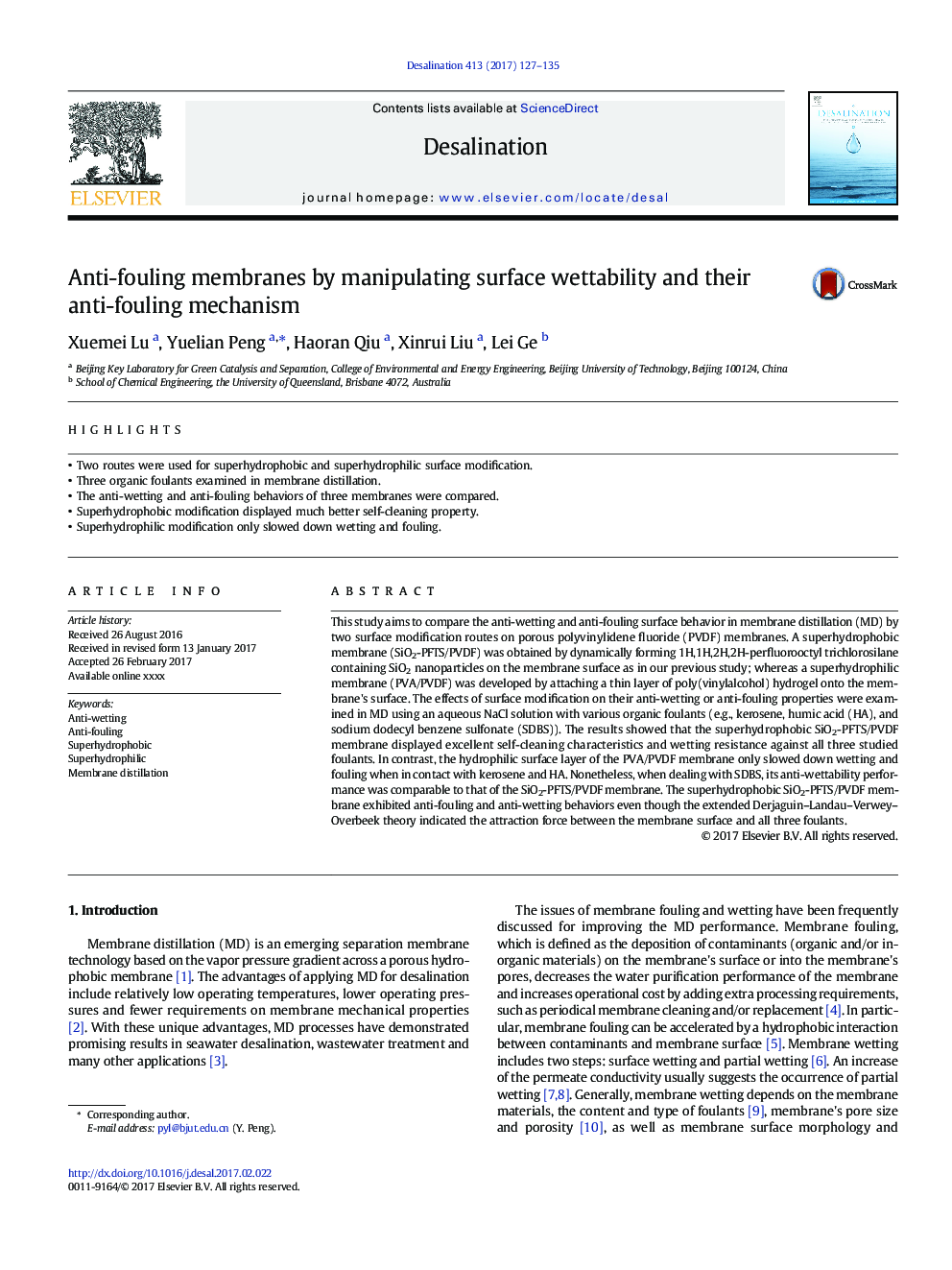| Article ID | Journal | Published Year | Pages | File Type |
|---|---|---|---|---|
| 4987780 | Desalination | 2017 | 9 Pages |
Abstract
This study aims to compare the anti-wetting and anti-fouling surface behavior in membrane distillation (MD) by two surface modification routes on porous polyvinylidene fluoride (PVDF) membranes. A superhydrophobic membrane (SiO2-PFTS/PVDF) was obtained by dynamically forming 1H,1H,2H,2H-perfluorooctyl trichlorosilane containing SiO2 nanoparticles on the membrane surface as in our previous study; whereas a superhydrophilic membrane (PVA/PVDF) was developed by attaching a thin layer of poly(vinylalcohol) hydrogel onto the membrane's surface. The effects of surface modification on their anti-wetting or anti-fouling properties were examined in MD using an aqueous NaCl solution with various organic foulants (e.g., kerosene, humic acid (HA), and sodium dodecyl benzene sulfonate (SDBS)). The results showed that the superhydrophobic SiO2-PFTS/PVDF membrane displayed excellent self-cleaning characteristics and wetting resistance against all three studied foulants. In contrast, the hydrophilic surface layer of the PVA/PVDF membrane only slowed down wetting and fouling when in contact with kerosene and HA. Nonetheless, when dealing with SDBS, its anti-wettability performance was comparable to that of the SiO2-PFTS/PVDF membrane. The superhydrophobic SiO2-PFTS/PVDF membrane exhibited anti-fouling and anti-wetting behaviors even though the extended Derjaguin-Landau-Verwey-Overbeek theory indicated the attraction force between the membrane surface and all three foulants.
Related Topics
Physical Sciences and Engineering
Chemical Engineering
Filtration and Separation
Authors
Xuemei Lu, Yuelian Peng, Haoran Qiu, Xinrui Liu, Lei Ge,
